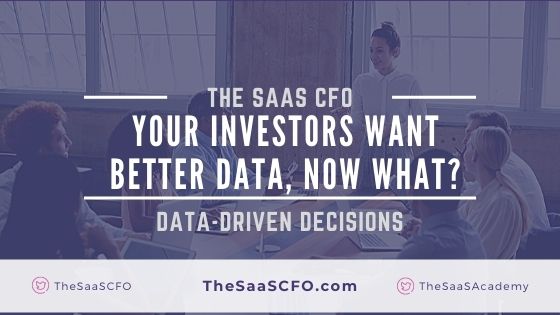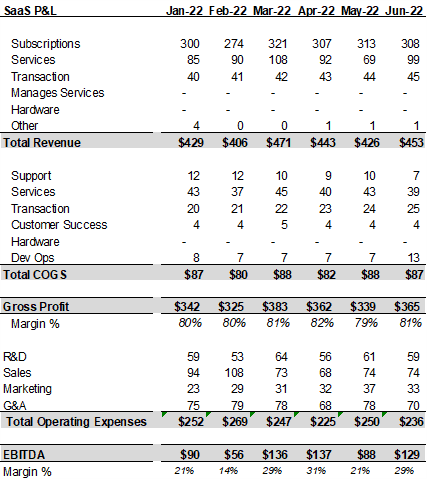I was chatting recently with an early-stage SaaS founder. She just took on her first round of venture capital. And just like that, the new investors want better data to drive decisions. No more gut decisions and managing your business with your bank account. Now what?
My new investors want better data to make decisions.
SaaS Founder
This day arrives for all SaaS founders and management teams. It may be at $1M ARR or at $10M ARR. At some point we must move from gut-driven decisions to data-driven decisions.
But wait, you say, my intuition took me far! Yes, very true, but now there are too many moving pieces in the business. The data points need more than the space on the proverbial startup napkin.
And there are more dollars at play. Bigger decisions, bigger impact on the business.
I have worked with a lot of SaaS companies, and I see a pattern forming on how to improve their financial maturity. Financial maturity helps you make better decisions, and it will make your Board/investors happy.
It starts with the accounting foundation, the SaaS P&L, the technology, and finally reports.
I tired to make this post as prescriptive as possible with links to additional resources and templates.
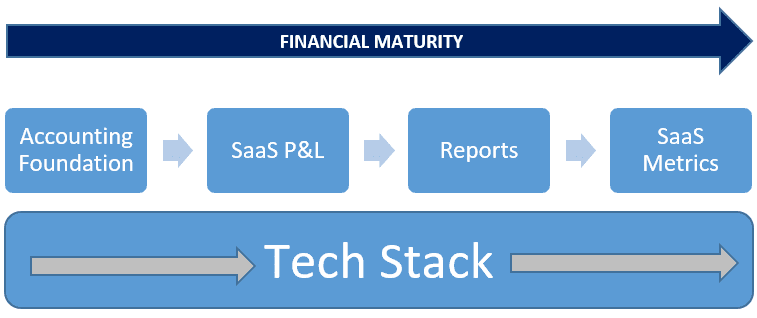
Accounting Foundation
Regardless of your accounting software, you need a solid accounting foundation. It’s very difficult to manage your business with poorly structured and coded financial statements.
There are three areas of focus when improving your financials. These include your chart of accounts, department coding, and revenue recognition.
- Chart of Accounts
- Common Problem – the chart of accounts (COA) lacks detail in revenue and expense for the proper SaaS P&L. The SaaS chart of accounts (COA) is a numerical list of your general ledger accounts. It covers the P&L and balance sheet. This is where we code the debits and credits. And it also determines the quality of data available for analysis and financial statement creation.
- Key Considerations – we need enough detail for our revenue streams. Revenue streams must by distinct (subscription vs usage vs transaction vs services and so on). Expenses need enough detail for forecasting, budgeting, and analysis. These need separate GL accounts -> contractors, wages, taxes, benefits, bonuses, and commissions. Marketing expense is also another focus area.
- Department Coding
- Common Problem – we are not coding expenses to the department level. We end up with one big bucket of expenses. What department has spent what?
- Key Considerations – We need wages coded to each department. Same for every expense posted to the P&L.
- Revenue Recognition
- Common Problem – we are not applying revenue recognition. Lumpy revenue streams. Inaccurate margins.
- Key Considerations – if we invoice in terms longer than one month, we need to apply revenue recognition to those invoices. It’s very hard, if not impossible, to manage our business, especially over $3M in ARR.
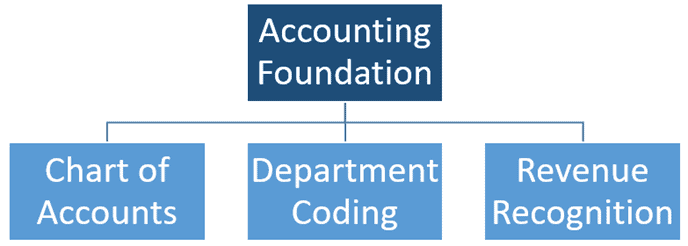
The proper accounting foundation sets us up for success with all downstream analysis and report creation. We are ready to create a true SaaS P&L.
For additional resources
- Post on the SaaS chart of accounts
- Free video lesson on the SaaS P&L Structure
SaaS P&L
The SaaS P&L is such a critical component to managing your SaaS business. I talk to founders and finance teams every week about the proper structure of your P&L. You can read my in-depth post on the SaaS P&L here.
With the accounting foundation in place, we ready to create a proper SaaS P&L.
The SaaS P&L is important to you as a SaaS manager, to your Board, and to your investors. The proper SaaS P&L benefits include:
- It’s easily consumable
- Clear definition of your revenue streams
- The COGS departments required to support your revenue streams
- Your overall gross margin and margins by revenue stream
- Your OpEx profile
- EBITDA – a long-term proxy for your cash flow
- And P&L data feeds important SaaS metrics
Finance and Accounting Technology
The days of having a basic accounting system are over. SaaS pricing and revenue streams have rapidly evolved. SaaS 1.0 is long gone.
You and your decision-makers need more than finance data to manage your business. We need people data from our HRIS, sales data from our CRM, customer data from our subscription management platform, and operational data from our app if we have variable revenue streams.
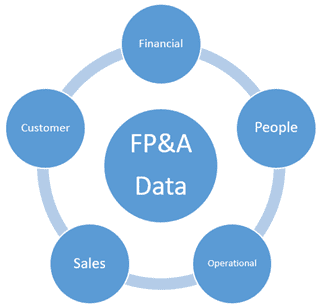
This post would never end if I addressed all of the required systems, but I do focus on three areas to start. These include our core accounting system, our invoicing system, and our revenue recognition system.

Core Accounting Solution
According to my latest tech stack survey, these were most popular accounting solutions in SaaS. If you are on QuickBooks or Xero, you will need point solutions to solve more complex invoicing scenarios and to apply revenue recognition to your invoices. If you are on Sage or NetSuite, you will leverage existing functionality and/or pay for additional modules.
We must ask if our core accounting can scale with the size and complexity of our operations.
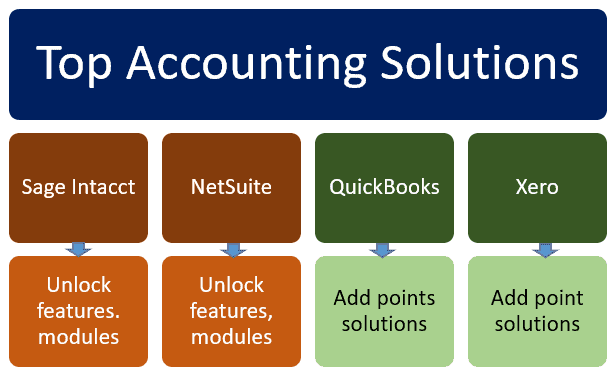
Invoicing Software
The next step in our tech stack journey is invoicing. Invoicing must be repeatable and accurate each month. Invoicing functionality may be a feature within our subscription management software.
The bullets below are my key considerations when researching the proper invoicing/subscription management software.
- My Go-to-Market Motion
- This dictates where I go with my tech stack. Do I have an outbound, closed won opportunity sales motion? Then CRM data will feed my invoicing and revenue recognition.
- Or do I have self-service sign up SaaS? Then payments integration is important and how the automatic invoicing gets to my general ledger. Plus any revenue recognition considerations.
- Invoicing Volume
- Do I invoice a handful of large, enterprise customers each month? Then I’m more concerned with feeding that invoice data to a revenue recognition engine. I’m assuming annual invoicing here.
- Or do invoice hundreds of customers manually (need a batch process now) or auto invoice with credit card customers?
- Revenue Types
- SaaS 1.0 was contracted MRR or ARR. Today, we have usage, transactional, hardware, services, managed services, events, and so on. You need to think through your billing use cases and how your current or future invoicing system can handle these scenarios. Can we invoice ahead of time, or do we invoice in arrears for usage? Big difference in your invoicing and close process.
- Manual Payments or Credit Card
- This determines my integrations and data workflow.
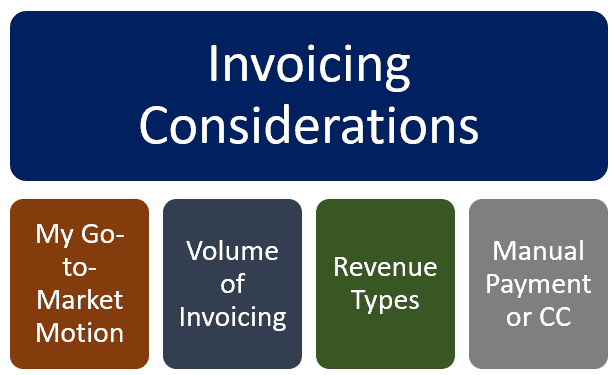
Revenue Recognition
We have to get serious about our accounting around $3M ARR. If we have been on cash-basis accounting, we need to move to accrual. A big part of this change involves revenue recognition, the third pillar in our accounting foundation.
If we invoice in terms longer than one month (i.e. quarterly, annually), we must apply a revenue recognition framework to those invoices.
Invoicing data feeds your revenue recognition. If you are on Sage or NetSuite, you most likely need to upgrade to their revenue management module. If you are on QuickBooks or Xero, you will need to add a point solution.
You can review the popular revenue recognition solutions in the chart below. This is from my 1Q22 tech stack survey.
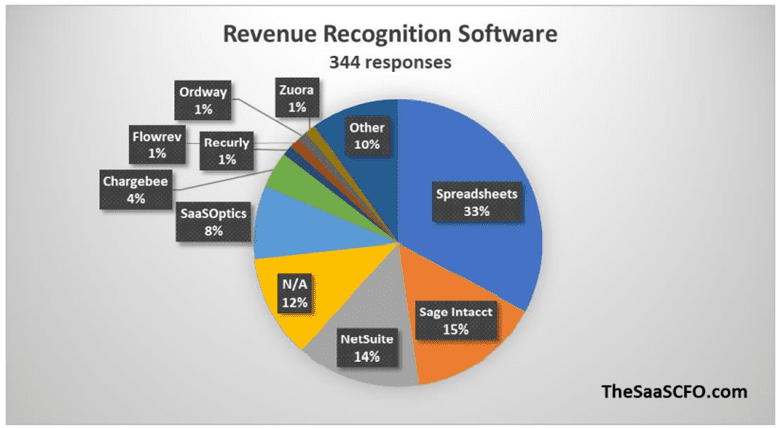
SaaS Reports and Metrics
With accounting and systems in place, we can create key reports as part of our monthly close process. I listed several of my key reports below.
My management team will receive these monthly. Your Board may receive these on a monthly and/or quarterly basis.
Of course, metrics cannot in their entirety in this post. My whole blog is dedicated to SaaS metrics. But you can jump start your SaaS metrics education with my SaaS Metrics for Beginners course.
Additional reporting resources:
- My post on the SaaS Bookings Report
- My post on How to Structure Your SaaS P&L
- My post on SaaS Revenue Retention
- My download bundle with metrics templates and forecast models
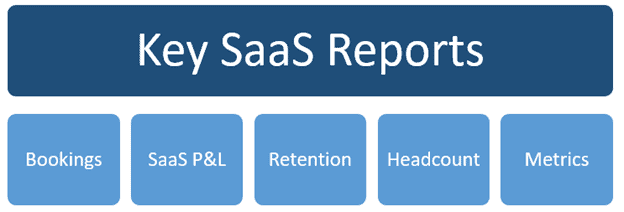
Takeaways
My intent with this post is to help you think about your finance roadmap. It’s a journey to improve your finance and accounting function, but it will pay dividends down the road. Start with the accounting foundation and then move to the SaaS P&L. Then see what metrics you can calculate from the available data.
I have worked in finance and accounting for 25+ years. I’ve been a SaaS CFO for 9+ years and began my career in the FP&A function. I hold an active Tennessee CPA license and earned my undergraduate degree from the University of Colorado at Boulder and MBA from the University of Iowa. I offer coaching, fractional CFO services, and SaaS finance courses.
